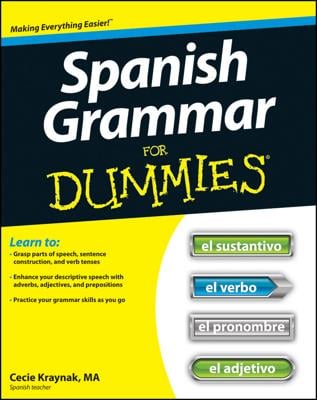Maybe you would better understand Spanish verb tenses today if you had paid more attention in your high school Spanish classes. Would . . . that’s what the conditional tense is all about. If the conditions were appropriate, then the action should’ve, could’ve, or would’ve resulted . . . theoretically speaking. Simply put, you use the conditional tense to express a conditional action. But you can also use it to make a polite request or to subtly, or not so subtly, suggest that someone perform a certain action.
Forming the regular conditional tense, if you really want to
In English, the key word to forming the conditional tense is would. You or somebody else would do something if the conditions were right. In Spanish, you actually change the form of the verb to build the sense of would right into it. When conjugating Spanish verbs in the regular conditional tense, keep the following points in mind:
When conjugating regular -ar, -er, and -ir verbs in the conditional tense, you simply take the entire verb infinitive (don’t drop anything) and then add the imperfect verb endings you use for -er and -ir verbs.
Conditional Verb Endings
| Yo |
-ía |
| Tú |
-ías |
| él/ella/ello/uno |
-ía |
| Usted |
-ía |
| nosotros/nosotras |
-íamos |
| vosotros/vosotras |
-íáis |
| ellos/ellas |
-ían |
| ustedes |
-ían |
Check out the following conjugation charts for each verb type.
preparar = to prepare
| Prepararía |
prepararíamos |
| Prepararías |
prepararíais |
| Prepararía |
prepararían |
| Ud. prepararía. = You (formal) would
prepare. |
|
vender = to sell
| Vendería |
venderíamos |
| Venderías |
venderíais |
| Vendería |
venderían |
| Vosotras venderíais. = You (plural, female,
familiar) would sell. |
|
escribir = to write
| Escribiría |
escribiríamos |
| Escribirías |
escribiríais |
| Escribiría |
escribirían |
| Ella escribiría. = She would write. |
|
Waffling with the conditional tense
The conditional tense is great for waffling on issues. You can state any impossible condition or set of conditions you like and then say you would’ve done something if only that condition or set of conditions had been in place. It works in every language — English, Spanish, Italian, you name it — and you don’t even have to be a politician to use it.You often use the conditional tense in a sentence with two verbs, in which one verb states the condition or problem and then the second verb states, in the conditional, what you’d do under that condition or if faced with that problem. For example, in the sentence, “If I had a million dollars, I’d travel around the world,” the first verb states a situation or condition, and the second verb expresses what you would do if that situation or condition existed.

